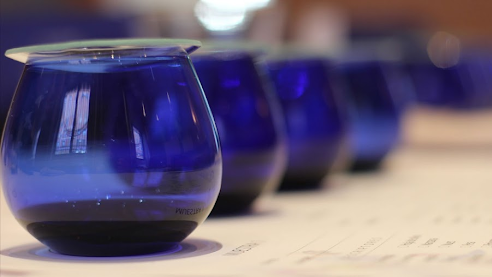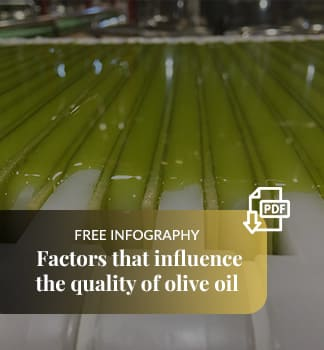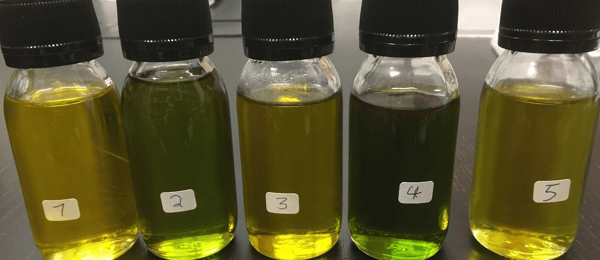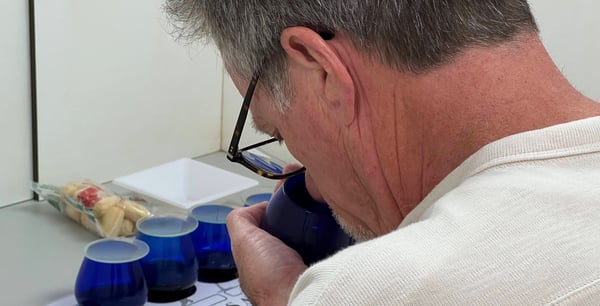Listen to this article
When we talk about Virgin Olive Oil tastings we have to differentiate the type of tasting we have decided to attend since depending on the importance and the rigor with which it is carried out, we have to take into account the regulations that regulate said tasting.
In hedonic or promotional tasting, it is not necessary to use the official oil tasting glass. They can be made in glasses with similar characteristics, such as wine glasses or plastic glasses.
In the training tastings, and in the ESAO tasting courses, we use official tasting glasses, which are those established according to regulations for use in official tasting panels.
Olive oil tasting session. ESAO Image Bank
In the online olive oil tasting the first thing that is sent to the student is a set provided, among other materials, of 6 official tasting glasses with their corresponding watch glasses.
Although, as we have said, depending on the importance of the tasting in question, the use of glasses or official glasses will or may not be mandatory or not, from here we do recommend that it be the tasting of the type that is whenever a an olive oil tasting, always try to use the official tasting glass.

Official tasting glasses with watch glass. ESAO Image Bank
It is very important to taste by easily detecting the aromas and flavors present in the sample and this is provided by the glass or the regulated oil tasting glass.
The basic plastic glasses or goblets, which do not even have the shape of the official tasting glass, are especially complex to detect all the nuances that we would like. If in itself, when it comes to new tasters, the determination and identification of descriptors is complex, or the differences in certain defects, if to that are added unsuitable tools or tasting glasses, it will be difficult to achieve our objective of learning.
Official Olive Oil Tasting Glass
Without a doubt, when you taste in the official oil tasting glass, you have the best instrument for tasting. The official oil tasting glass, fits perfectly in the palm of your hand and allows you to maintain a relationship with the sample in a relaxed and comfortable way.
ESAO Image Bank
Color of the glass
The color of the olive oil sample in the sensory analysis, despite not being a characteristic that indicates the quality of the oil, it is important that it is hidden.
The student of the tasting course, can suggest himself and without being aware when seeing a greener color in the sample, he relates it to higher quality virgin olive oils, and this is not always the case. This is why the tasting glasses must be of a dark color that does not allow to identify the color of the sample, and, in this way, try to avoid prejudices.
ESAO olive oil tasting session. ESAO Image Bank
The occasions in which ESAO has used tasting glasses that have not been the official ones have been when it has been mass and international tastings where logistics and weight have been a problem. In these tastings the objective was not so much to differentiate the samples from each other as to learn about the tasting technique. However, for these occasions laboratory tasting glasses are selected, with food materials and with the dimensions as faithful as possible to the official olive oil tasting glasses.
Olive oil tasting glasses. ESAO Image Bank
Oil tasting glasses. ESAO Image Bank
Regulations
Next, we transcribe the International Olive Council regulation regarding the Olive Oil Tasting Cup (COI/T.20/Doc. nº 5/Rev. 1).
- PURPOSE
The purpose of this standard is to describe the characteristics of the glass intended for use in the organoleptic analysis of edible oils (odour, taste, flavour).
In addition, it describes the adapted heating unit needed to reach and maintain the right temperature for this analysis..
- DESCRIPTION OF THE GLASS
The drawing in Figure 1 attempts to establish the optimum characteristics desirable in a piece of apparatus of this kind, which can be specified as follows:
a) Maximum steadiness, to prevent the glass from tilting and the oil from being spilled.
b) A base which easily fits the indentations of the heating unit so that the bottom of the glass is evenly heated.
c) A narrow mouth which helps to concentrate the odours and facilitates their identification.
d) Made of dark-coloured glass to prevent the taster from perceiving the colour of the oil, thus eliminating any prejudices and impeding the possible formation of biases or tendencies that might affect the objectiveness of the determination
2. 1 DIMENSIONS
Figure 1
The glass is sketched in Figure 1, and has the following dimensions:
-
- Total capacity: 130 ml + 10 ml
- Total height: 60 mm + 1 mm
- Diameter of mouth: 50 mm + 1 mm
- Diameter of glass at its widest: 70 mm + 1 mm
- Base diameter: 35 mm + 1 mm
- Thickness of glass on sides: 1,5 mm + 0,2 mm
- Thickness of glass base: 5 mm + 1 mm
Each glass shall be equipped with a watch-glass, the diameter of which shall be 10 mm larger than the mouth of the glass. This watch-glass shall be used as a cover to prevent the loss of aroma and the entry of dust.
2.2 MANUFACTURING CARACTERISTICS
The glass shall be made of resistant glass; it shall be dark-coloured so that the colour of its contents cannot be discerned, and it shall be free from scratches or bubbles.
The rim shall be even, smooth and flanged.
The glass shall be annealed so that it stands the temperature changes it has to undergo in the tests.
2.3. INSTRUCTIONS FOR USE
The glasses shall be cleaned using unperfumed soap or detergent and shall then be rinsed
repeatedly until the cleaning agent has been totally eliminated. The final rinse shall be with
drinking water, after which the glasses shall be left to drain and then dried in an odour-free
environment.
Neither concentrated acids nor chromic acid mixtures shall be used.
Official oil tasting glasses. ESAO Image Bank
The glasses shall be stored in a cabinet, protecting them from contamination from any extraneous odours.
Before use, each glass shall be smelled to ensure that no extraneous odour is present.
When the test is being prepared care shall be taken to record the code of each glass and the oil it contains. Only the person in charge of the test will know to which code the oil corresponds.
3. DEVICE FOR HEATAING SAMPLES
The samples shall be organoleptically examined at a set temperature which, in the case of edible oils, shall be 28 + 2 ºC. For this purpose, a heating device shall be installed in each booth within the taster's reach. It comprises an aluminium block immersed in a thermostatically-controlled water bath so as to keep a uniform temperature. This block has a series of indentations into which fit the bottoms of the glasses. The temperature difference between the heating device and the oil contained in the glasses inserted in the indentations of the various blocks shall not be more than + 2 ºC.
Heating device oil tasting glasses
This block has a series of cavities to which the bottoms of the glasses are adapted. The temperature difference between the heating device and the oil in the cups placed in the recesses of the different blocks must not exceed + 2oC.
.png)





